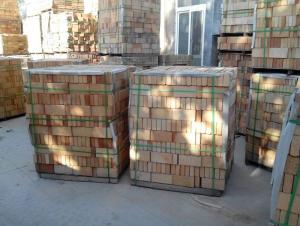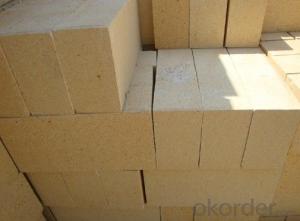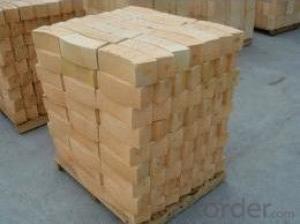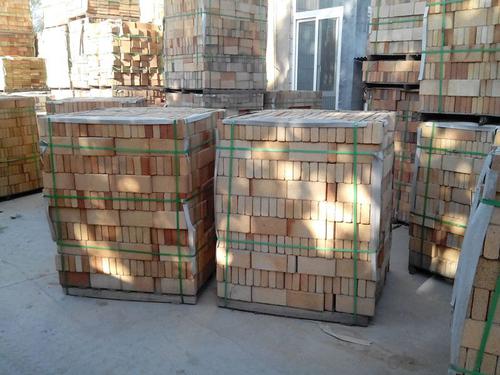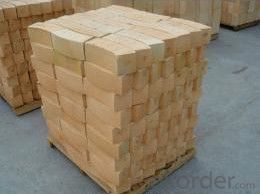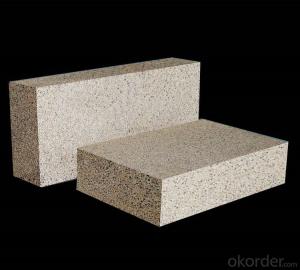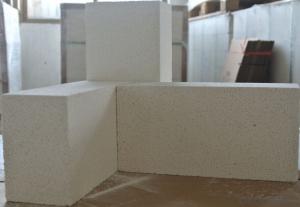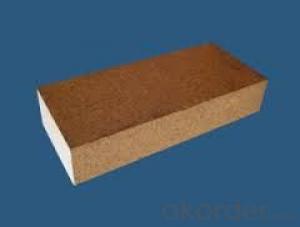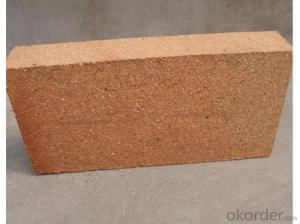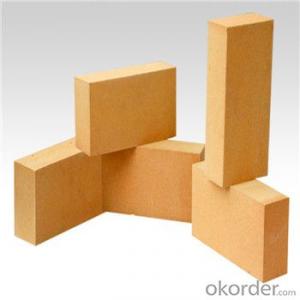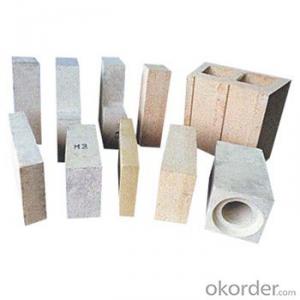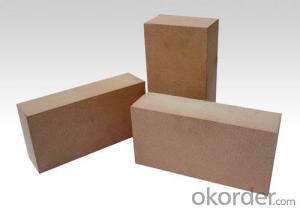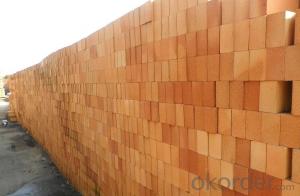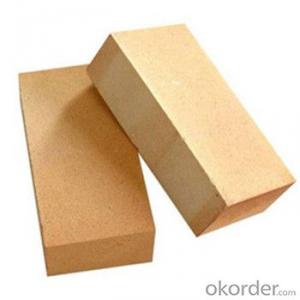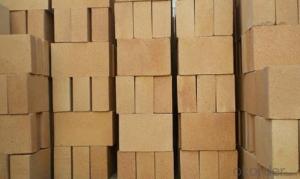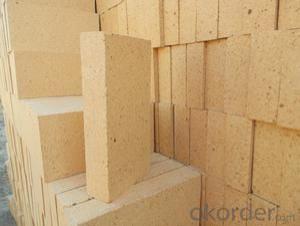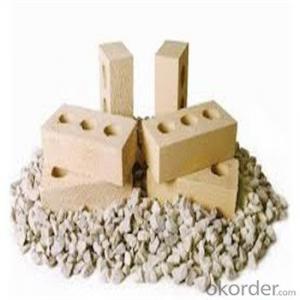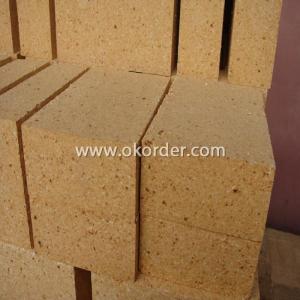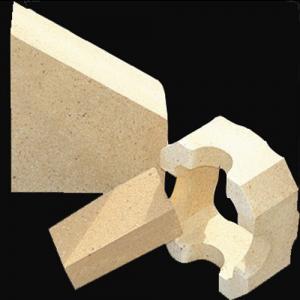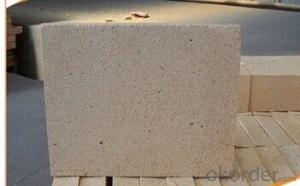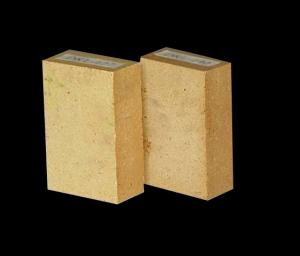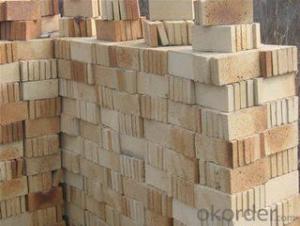Fireclay Brick for Stoves - Thin Fire Brick Wholesale
- Loading Port:
- China main port
- Payment Terms:
- TT OR LC
- Min Order Qty:
- 1 m.t.
- Supply Capability:
- 1000 m.t./month
OKorder Service Pledge
OKorder Financial Service
You Might Also Like
Description:
Refractory brick is a block of refractory ceramic material used in lining furnaces, kilns, fireboxes, and fireplaces.
We provide high quality Refractory Fire Bricks that are used on wide range in the various industries like Cement, Glass and Steel. Refractory Fire Bricks are provided as per the quantity and specifications required by the customers. We provide an extensive range of Refractory Fire Bricks at reasonable prices that depend upon the quantity ordered.
Fire Clay Brick Features:
1. Good thermal stability, low thermal conductivity, good insulation performance.
2. Low bulk density, good integrity, high mechanical strength.
3. Good thermal shock stability, good resistance to abrasion and corrosion.
4. Good volume stability at high temperature.
Fire Clay Brick Application:
1. Widely used in various kilns due to its cheapness and general tray package
2. All parts of furnace lining for middle and small capacity blast furnace.
3. Low temperature parts of waste incinerators and glass melting furnaces, etc.
4. Widely used in metallurgy, construction (glass and cement), chemical industry, electric power and machine building.
Specifications
1. Fire Caly brick Manufacturer
2. ISO 9001 certificate
3. Credible Quality
4. Reasonable price
5. Delivery in time
Technical data:
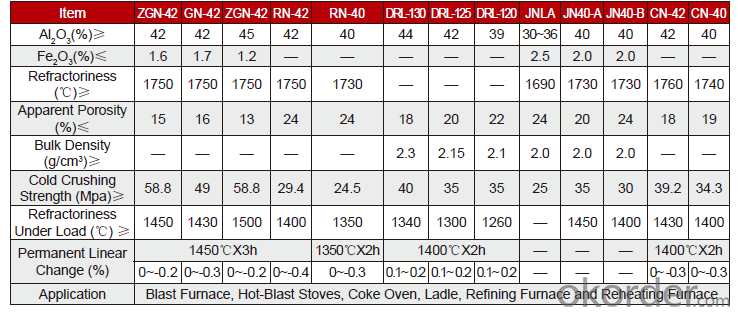
Q1 What’s the transport method?
A1 FCL delivery goods with wooden pallet or wooden case by sea; If LCL delivery, must with wooden case; Sometimes need open top, flat rack or bulk cargo.
Q2 What’s the required payment term?
A2 Generally 30% TT as the prepayment, 70% TT before delivery. If need, 100% Irrevocable Letter of Credit or negotiation.
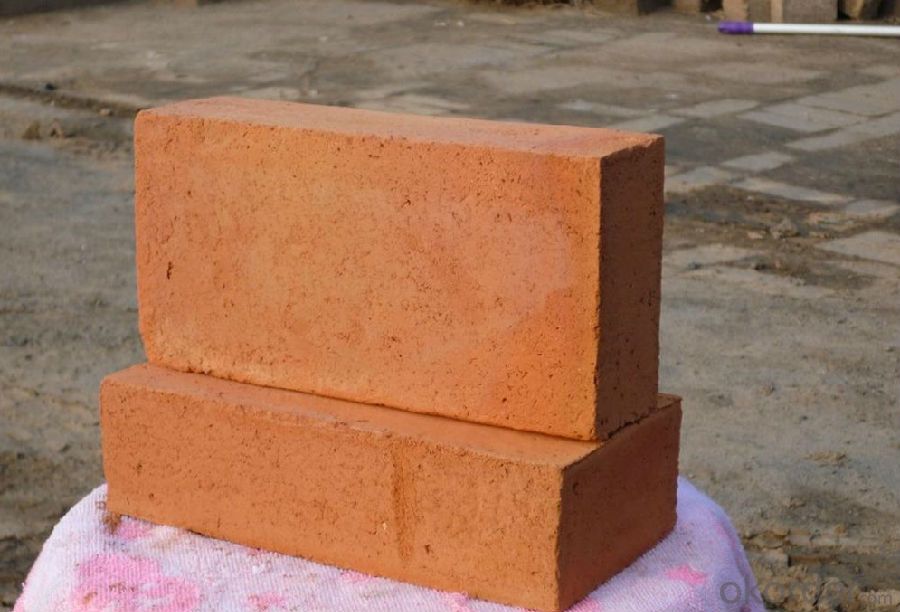
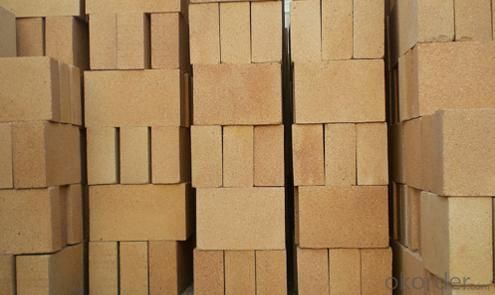
- Q: several refractory brick of rotary kiln several is damaged, how many refractory bricks should be replaced?
- In general, if the brick inside the kiln break or loose core, the bricks of whole circle should be replaced, if only mend by replacing a damage part is also ok, but the service life is shorter.
- Q: What are the simple ways to distinguish between excessive clay bricks and less fired clay bricks?
- Generally speaking, compared with the exterior burning brick, the internal combustion brick not only saves the clay and the waste material, but also has smaller volume density, lower thermal conductivity, and can increase the intensity by about 20%. Burnover light color, sound, low intensity; burned brick deep color, crisp sound, high strength, irregular size. These two kinds of bricks are unqualified products.
- Q: How much fireclay is needed per cube refractory bricks?
- Normal refractory bricks need to use 70-80kg refractory mud each cubic . In fact, this can be calculated, because the volume of refractory bricks and refractory mud density can be measured. Of course, here is an important point, that is the size of the brick seam, 1mm brick seam and 3mm is significantly different. Sichuan brand refractory mud has many kinds, like high aluminum, clay, corundum, magnesia, insulation and so on, the dosage is different.
- Q: What are the reasons for the production of waste in the formation of fireclay bricks?
- The reasons for the production of waste when form fireclay bricks: Tile size is unqualified. This is due to the mold installation is not firm, the template transfers when molding; if the amount of material being added fluctuates largely, also can cause the body size changing. Ji Yangon Chi lie charge generation layer containing decyl poke pull and crack. The molding operation does not according to the principle of the light first and the thick later. At the initial pressure, the air doesn't releases, which causes the elastic aftereffect by repressing. Too much mud water, uneven mixture and inequal template all can make the body produce layer crack or crack. Twist. The template is used for too long, the template deforms, so raw brick deforms, the amount of water is too large, brick naturally deforms, causing the body twist. Miss edge and angle. Because of poor plasticity of mud, particles segregate, feeding back corner is not real, the body will appear side missing and angle modulation phenomenon. Bias voltage. Due to the deflection of the die head or the uneveness of mold bottom. Loose。 Due to insufficient feeding amount or insufficient pressure times.
- Q: 1200 degrees inside the furnace, lay a layer of refractory brick, what is the temperature outside?
- except refractory brick, refractories include refractory concrete (refractory cement+aggregate), fire-resistant insulating layer (refractory cement+vermiculite powder or refractory cement + diatomaceous earth) and so on.
- Q: Whether fireclay raw materials or clinker are used when masonrying general fireclay?brick? What is the difference between raw material and clinker?
- Generally, fireclay used to build fireclay?brick is raw materials, it can also use clinker. After calcination, the raw material will shrink, but the brick seam is thin, the deformation has little effect.
- Q: What can be applied to the burned refractory brick to resist heat shock?
- Acidic refractory material use monox as the main component, among which cilica brick and clay brick are commonly used. Silica brick is silicious product containing monox more than 93%, whose raw materials include silica, waste silica brick scrap and etc. The acid resistance of slag erosion ability is good, and the softening temperature under a fixed load is high. The volume won't shrink after repeated burning, but even a slight expand; but it is vulnerable to the erosion of basic slag, and has low thermal shock resistance. The silica brick is mainly used for coke oven, glass melting furnace, acid hearth furnace and other thermal equipments. Clay brick uses refractory clay as the main raw material, containing 30% to 46% of aluminuum oxide, belong to weakly acidic refractories. It has good heat shock resistance and corrosion stability to acid slag, and it's widely used. Neutral refractory materials use aluminum oxides, chromium hemitrioxides or carbons as the main components. Corundum products containing more than 95% of alumina is a kind of high quality refractory material with wide application.
- Q: What type of refractory brick won't deform or crackbe for a long time in the temprature of about 1600 degrees?
- 1. , mullite poly light ball brick type, andalusite brick type: MJ-1600 MJ-1700 the temperature is higher than 1600 C. 3, the refractory bricks that won't deform or crack in the 1600 degrees Celsius for a long time includs the following several commonly used bricks: GMZ-80 GMZ-75 the temperature is higher than 1650 DEG C, 2, corundum mullite brick type
- Q: Can refractory bricks be used to build a house?
- Refractory brick can be used to build houses, but you can not use ordinary cement to build, the cost is 3 times than that of ordinary brick.
- Q: does the electric kiln burner need to be sealed?
- seal when open the kiln, and observe the temperature, when the temperature reaches a point, you can move the firebrick away, and continue observing the temperature to decide whether to seal it or not, but do not seal it completely, repeat the procudure until reach the sinter point or skill requirement.
Send your message to us
Fireclay Brick for Stoves - Thin Fire Brick Wholesale
- Loading Port:
- China main port
- Payment Terms:
- TT OR LC
- Min Order Qty:
- 1 m.t.
- Supply Capability:
- 1000 m.t./month
OKorder Service Pledge
OKorder Financial Service
Similar products
Hot products
Hot Searches
Related keywords
